Learn all the Ways to Make a Payment with NBC
CASH PAYMENTS
Paying in cash for small construction projects is quick and fee-free, offering clear budget control. However, for larger payments, cash can be risky and impractical, leading many to choose alternative payment methods.
CHECK PAYMENTS
Checks are becoming less common but still offer a record of payment without extra fees. However, they can delay transactions since they take time to clear, and bounced checks may result in fees.
CREDIT CARD PAYMENT
Credit cards offer convenience and fraud protection for home renovations, allowing you to spread costs over time. However, processing fees of 2-3% can increase your total cost. If avoiding fees is a priority, consider other payment methods.
ACH Payments (Automated Clearing House)
ACH transfers offer a secure, low-cost way to pay contractors directly from your bank account, with fees lower than credit cards. At New Beginnings Construction, we prefer this method as we absorb the fees. However, be aware that it’s not instant; there may be a delay of a few days for processing.
Venmo and Digital Wallets
Digital wallets like Venmo offer a convenient way to handle small to medium payments instantly. However, they have transfer limits and may incur fees, which can make them less suitable for large projects.
Third-Party Financing Options
Paying for a large construction project outright can be impractical. Third-party financing options can help cover costs without depleting savings or maxing out credit cards. Homeowners often use these options to supplement additional expenses they may not have in savings.
Planning Your Project
When you’re planning your next construction project, one of the most important considerations is how you are planning to pay for it. Most construction companies often different payment options to suit customer’s needs, and New Beginnings Construction is no different. We offer multiple payment options, and payment schedules, allowing you to choose the method that works best for you.t.
Payment Schedules and What to Expect
In addition to deciding how to pay, you also need to consider when and how often you will have to pay. Depending on the size and complexity of your project, the payment schedule can vary pretty significantly.
QUICKER OR SMALLER JOBS
For smaller projects like shingle roof or window replacements, or quick home repairs, you’ll typically pay a 40-50% deposit before work begins. This covers materials and secures your spot in the contractor’s schedule. The final payment is due upon completion. This simple payment structure suits short-term projects with manageable financial commitments.
MEDIUM JOBS
For medium or complex projects, payments are typically broken into stages. You’ll pay a 20-30% deposit upfront, followed by progress payments at key milestones (e.g., after the foundation, framing, or other major stages). This structure helps track progress and manage your budget, with the final payment (5-10%) due upon project completion.
LARGE JOBS
For very large or custom projects, such as building a new home or completing a large-scale renovation, you may encounter an even more detailed payment schedule. These projects can involve 5-10 draws throughout the construction process, with payments tied to inspections or other significant milestones. A small portion of the total cost around 5-10% is held back until the project is fully completed. This structure ensures that the contractor addresses any final details or issues before the full payment is made. For you, this can offer peace of mind, knowing that you still have some financial leverage until the project meets your expectations.
At New Beginnings Construction, we like our payment structures to mirror the expenses of the job. So we don’t bill the client too far ahead of the costs, nor are we comfortable shouldering much of the costs for the customer. There is a fine balance between the two that we think is fair to both the contractor and the client.
Making the Right Payment Choices
When planning your construction project, choosing the right payment method and schedule is key to managing your finances and ensuring a smooth experience. Whether you prefer the ease of digital wallets, the structure of check payments, or the flexibility of a HELOC, understanding your options will help you stay in control of your budget while ensuring that your project progresses smoothly. By selecting the right payment method and schedule, you can make the construction process easier and more manageable.


